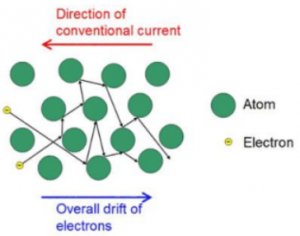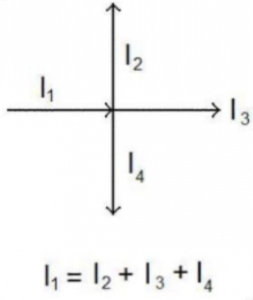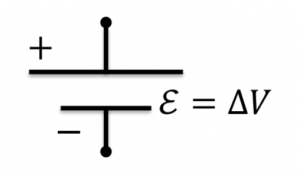Unit IV On-a-Page
Note: the video below says “Unit V,” but it is really Unit IV. The numbering difference comes from the fact that there used to be a unit between what is now Unit II (Geometric optics) and Unit III (Electrostatics) which has since been dropped.
Current
- Current and charge must be conserved items.
- The current is the amount of charge per second

- units: C/s = A
- Direction of current is direction of positive charges’ motion

Kirchhoff’s Rules (Or “How to analyze a circuit”)
- The amount of current going into a junction must equal the amount going out (otherwise it would pile up)

- The changes in potential around any closed loop are zero
Circuit Elements
Batteries
- The potential drop across a battery is fixed

Resistors
- Resistors dissipate electrical potential energy into something else (heat, motion, light, etc.)
- The potential drop across a resistor is related to the current and resistance
![]()
- The resistance is fixed by the material, units:
![]()
- The potential drop across a wire is zero (
 )
)
Capacitors
- A capacitor is two pieces of metal that don’t touch
- Capacitors store charges separated. Therefore, they store energy
- The capacitance is a property of the geometry of the plates
- The potential drop across a capacitor is related to the charge and the capacitance:
![]()
- For parallel plates
![]()
- Units
![]()
Power
- The power provided/stored/dissipated by a circuit element is
![]()
- Must do element-by-element

